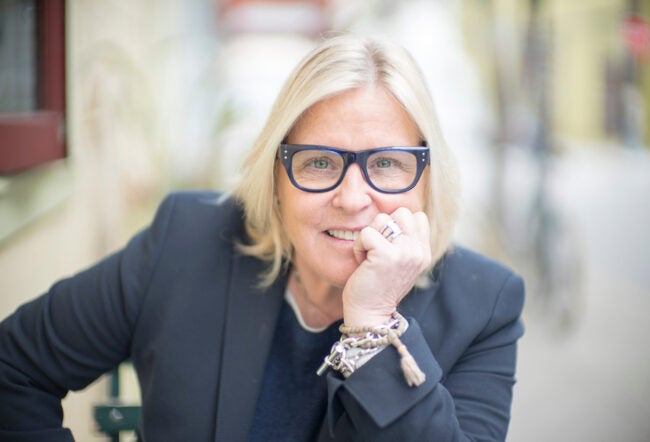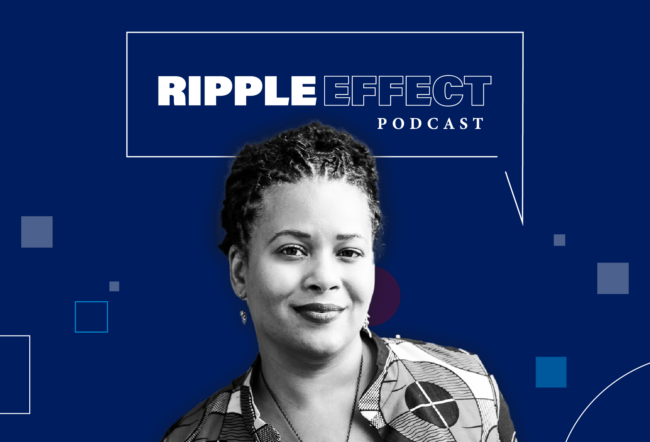When Suzanne Xie quit her asset management job at Goldman Sachs to concentrate on her online start-up, she applied to be a part-time barista at Starbucks, figuring she could use the health insurance the café chain offered. Her rejection letter turned out to be a blessing in disguise, because it meant she was able to devote more time to her fledgling business. A year later, she and her co-founder sold Weardrobe, an online community for fashionistas, to a company that was later purchased by Google.
New York-based Xie and four other dynamic entrepreneurs shared their insights and adventures in business at the “Women in Entrepreneurship: Starting, Leading and Growing New Ventures” panel, part of the 12th annual Wharton Women in Business Conference in Philadelphia. While the speakers came from diverse backgrounds and industries, their advice to other entrepreneurs was similar — choose mentors carefully, set clear goals, be flexible, don’t be deterred by naysayers and, most of all, love what you do. “You have to be scrappy about it,” Xie said. “It is completely scary [to start a business] but the happiness you get out of that balances it out.”
At a time when the U.S. is still recovering from a harsh recession, such entrepreneurial pluck matters. The five women on the panel went into business for various reasons — one saw a limited career ladder for women in advertising decades ago, another spotted a need for innovative financing in emerging countries and a third started a website because she needed to keep track of all her clothes. The other two women were passionate about the environment and were co-creators of green businesses — car sharing and environmental PR and advertising, respectively.
Entrepreneurship isn’t easy, they conceded. Some held down day jobs while working nights and weekends to get their businesses up and running. Others quit their jobs and lived on shoestring budgets to pay the bills. A willingness to accept those sacrifices was part of what made it clear to the women that they were on the right path. “That’s when you realize that you really want to do something — when you are willing to put in the time,” noted Shivani Siroya, founder and CEO of Los Angeles-based micro-investment firm InVenture Fund.
Adviser or Adversary?
Along with a hefty amount of determination, the panelists agreed that having the right people — including mentors — on board is critical for getting a new venture off the ground. It might be tempting to form an alliance with big names in business — people with vast experience and an address book full of contacts — but “if they’re not going to sit down with you and take the time to help you, it’s not really worth it,” Xie pointed out. Rather than immediately asking a big name to be an adviser, the panelists advised entrepreneurs to sound out potential mentors over a few meetings to see if there is a shared vision and agreement about how value can be added to the job at hand.
It’s important that the adviser-entrepreneur relationship is based on trust, putting issues on the table without adversarial feelings, they suggested. “Don’t take an adviser you will just be battling with,” said Diane Meier, founder and president of marketing firm Meier in New York. She added that the best mentors provide valuable direction and information while being direct about what they see will and won’t work.
Eventually, advisers can become invaluable advocates, especially through tough times. “You will invariably run into people who will doubt that you can do it,” noted Antje Danielson, co-founder of Massachusetts-based car-sharing company Zipcar. While Zipcar now offers its membership-based vehicle sharing service in more than 60 cities in the United States, Canada and the United Kingdom, Danielson and partner Robin Chase initially struggled to convince investors that there were many Americans who wanted to share a car. “When you run into that problem, it is really helpful to have a group of advisers who don’t want to mess with your idea but will [instead] speak for your idea.”
In Xie’s case, she needed advisers with information technology skills that complemented hers for Weardrobe and for her current online personal-health business Lollihop. “I’m not actually a technical person, even though my businesses are these websites,” she said. “So I always have strong technical advisers.”
Potential business partners also need to share the vision and goals of the company, the panelists said. Danielson suggested having a law firm draw up contracts to keep everyone’s roles and responsibilities clear. She noted that having a business partner is like getting married, and that the company is the offspring. But like all unions, there can be trouble. “Marriages go well for a while, but you can get divorced. What do you do with the kids?” she asked. If such conflict arises, Danielson found that it helps to put the good of the company ahead of personal gain. By setting aside personal agendas, “the kids will still be in good hands, even if the parents are not together anymore.” An escalating dispute with her co-founder could have spelled the end of Zipcar, but rather than becoming embroiled in it, Danielson opted to leave the company (she remains a shareholder for an upcoming IPO).
Inflexibly Pragmatic
Once a business gets going, flexibility is critical, the panelists said, noting that entrepreneurs must remain open and adaptable even when something unexpected occurs. For example, Danielson said Zipcar’s major clients proved to be universities, municipalities and businesses looking for a rent-by-the-hour transportation fleet, rather than the individual customers that the partners originally expected. The company adapted by changing the focus of its marketing.
But being flexible doesn’t mean losing focus. A passionate environmentalist, Valerie Davis co-founded Enviromedia Social Marketing in Austin, Tex., to help public- and private-sector clients develop better public relations plans for their environmental programs. “This focus has kept us in business,” she noted. “Otherwise, we could be very much like the [general PR] agency down the street.” The company has carved an additional niche for itself by creating a “Greenwashing” Index which gauges the truthfulness of advertisements making environmental claims. The Index is now used by major media outlets, including Newsweek and the Chicago Tribune. While corporate budgets for green marketing have been squeezed in recent years, Davis said business from government entities has remained robust with health awareness campaigns, including some related to last year’s swine flu scare, helping business.
Siroya continuously refines InVenture’s business model while staying loyal to the micro-investment company’s mission and target customers. She decided that the firm, which connects individual investors to entrepreneurs in emerging countries, wouldn’t be dependent only on donations and grants, but would also seek support from the private sector. This hybrid model enables InVenture to pursue a social entrepreneurship mission while maintaining a viable business model. Siroya has kept the minimum investment amount low to encourage “crowd funding” as investors tightened their belts during the economic downturn. “The economy helped us build this business model,” she noted.
No matter what the economic climate, entrepreneurs want the satisfaction of seeing their businesses grow in leaps and bounds. But how much growth should a company plan for at the start? The women on the panel had different views about how to pace the scaling of a business, although they agreed that growth strategies vary by sector.
For example, Zipcar’s Danielson said that companies requiring costly technological investments might want to scale early, rather than having to invest in a ramp-up later on. When Zipcar was meeting with potential investors, some laughed when Danielson’s PowerPoint presentations showed a 10-year projection of 580,000 customers. Today, Zipcar has passed its tenth anniversary and has more than 600,000 members. “Without that [initial] goal in mind, we would not have set up the technology to scale to that,” Danielson noted. “That’s really important to consider because technological development is incredibly expensive.”
But for a lifestyle business like Xie’s, breaking into the market quickly was initially more important than scale. “Speed is what’s going to take your product to market,” she suggested. “Once you get there … you will have enough resources to solve [scale issues].” It took Xie about a month to get the Weardrobe site running. Traffic was soon so heavy that the site began crashing frequently, so Xie knew it was time to scale up.
It’s a tricky call to make, panelists noted, because scaling too quickly may put the company at risk or require the business to rapidly downsize. When Meier’s agency grew to 35 people, she felt too far removed from the core of the business — working closely with clients. “I was doing almost none of the stuff that I loved,” added Meier, who has since trimmed the company to about 10 employees.
According to Meier, her experience reveals the critical dimension about being an entrepreneur: It’s not always about making it big and then cashing out as a multimillionaire; it’s also about being happy. “Everybody on this panel has suggested to you how their heart was involved, not in being an entrepreneur but in actually creating something,” Meier noted. “Being an entrepreneur was the vehicle that brought their idea to the market. So scale is not always about being big. Your heart is what you always need to be looking to fulfill.”



